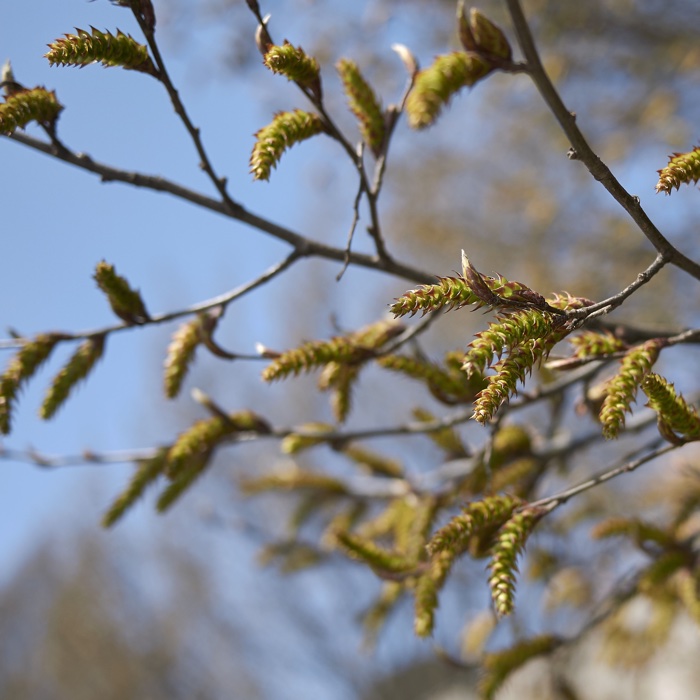Botanical collection

White hornbeam
Common name: White hornbeam
Latin name: Carpinus betulus
Family: Betulaceae
Origin: Europe, Caucasus, Turkey and Iran
Features:
The genus, Carpinus, derives from the Celtic terms car, ‘wood’, and pin, ‘head’. In fact, it seems that the wood in these trees was used to make yokes for cattle. The white hornbeam differs from its black hornbeam cousin because its leaves do not have tertiary veins.
Albero deciduo di medie dimensioni, alto fino a 20 metri, comune in tutta Italia Medium-sized deciduous tree, up to 20 meters high, common throughout Italy in woods at up to 900 meters of altitude, even in shaded locations. It withstands pruning well and has the characteristic of retaining dead leaves throughout the winter season. Equipped with ample adaptability, it vegetates well both in cold and in warm-temperate climates, it resists to the intense cold, but fears prolonged droughts.
The leaves are simple, oval and pointed, with alternate insertion, 5-10 cm long, doubly toothed and with very evident nervation. The top of the leaf is dark green and glabrous while the bottom is lighter and pubescent. In autumn the leaves initially acquire a beautiful yellow-orange colour, then dry turning to brown.
The male inflorescences are pendulous, yellowish green, up to 5- 6 centimetres long, and are carried on the branches of the previous year that are very decorative. Instead, the female flowers are gathered in green ears and appear on the branches of the year at the same time as the leaves.
The fruits are grouped in decorative pendulous infructescences of 7-15 cm formed by a small green nut with thickened walls located at the axil of a characteristic 3-lobed bract.
The white hornbeam is used for the beautiful shape of its crown, for avenues, parks and road trees, but are also highly appreciated in border hedges or as wind breakers.
Curiosity: its leaves were used to treat wounds.
Selection for the park: low deck plant; trunk circumference 35-40 cm; height 8-9 metres.
Botanical information powered by AG&P
See on the map